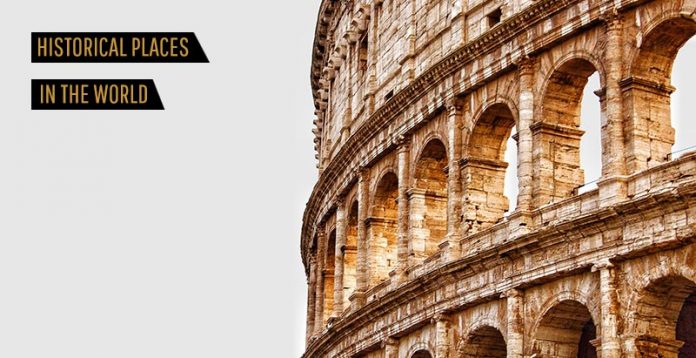Up for an adventure? Consider taking a trip to the most important historical sites on earth! These places are jam-packed with history and offer a unique opportunity to learn about the past. Everyone can enjoy visiting historical places, which range from castles and old churches to pre – historic ruins. In this article, we’ll explore some of the best historical places in the world. So grab your bags and get ready for a journey back in time!
10. The Colosseum, Italy
The Colosseum is probably the most famous historical places in Rome. Built in the 1st century AD, this great arena could seat 45,000 spectators and was the largest Roman amphitheater in the world. It hosted gladiatorial combats, spectacles with wild beasts, and possibly the execution of early Christians. The Colosseum holds a significant place in history, particularly during the Middle Ages. It was believed to be a site of martyrdom and was highly regarded as one of the sacred historical places.

9. The Taj Mahal, India
If you ever find yourself in Agra, India, be sure to visit the breathtaking architecture that is the Taj Mahal. This white marble tomb was built in the 1600s as a monument of everlasting love for the deceased wife of Mughal Emperor Shah Jahan. It’s no surprise that it was designated a UNESCO World Heritage Site in 1983 and later named one of the New Seven World Wonders.
However, in order to preserve this awe-inspiring site, there are now limitations on tourism. The Taj attracts between two and four million visitors annually, but the biggest threat to its preservation is air pollution that can damage the marble.

8. Acropolis, Greece
Acropolis means “high city” in Greek, literally city on the extremity and is usually translated into English as Citadel (akros, akron, edge, extremity + polis, city, pl. acropoleis). For defense, early people naturally chose elevated ground to build a new settlement, frequently a hill with precipitous sides.
Citadels were central to the growth of many large cities, including modern Rome. The term acropolis can refer to any citadel, not just Greek ones. Citadels in Jerusalem, Asia Minor, and Edinburgh’s Castle Rock also played a significant role in the development of many cultures throughout history.
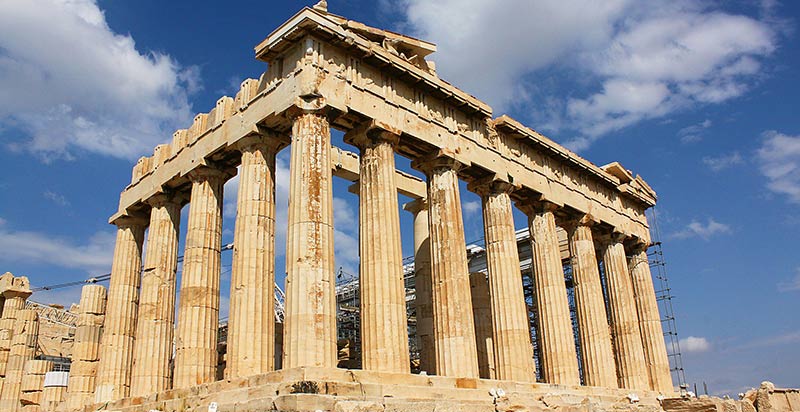
7. Alhambra, Spain
The Alhambra in Granada, Spain is so much more than architecture and history, it is an overwhelming feeling. Reaching the hilltop will bring new emotions, like entering a whole new world. The serene surroundings are peaceful and calm, like never experienced. The magnificent gates will fill anyone with wonder and amazement.
It is probable that many of us who are interested in the Alhambra have seen beautiful pictures of it, but when you are coming closer, the magnificence of its physical aspect, seeming to touch the deep Grenadine sky together with originality, is breathtaking.
The Alhambra is a castle from the 9th century. It has experienced many historic and emotional moments that continue to inspire us today. The beauty and grandeur of this fortress are breathtaking. Whether you love history or want to relax, the Alhambra is a destination you must see. It will leave you feeling enriched and inspired.

6. The Great Wall of China
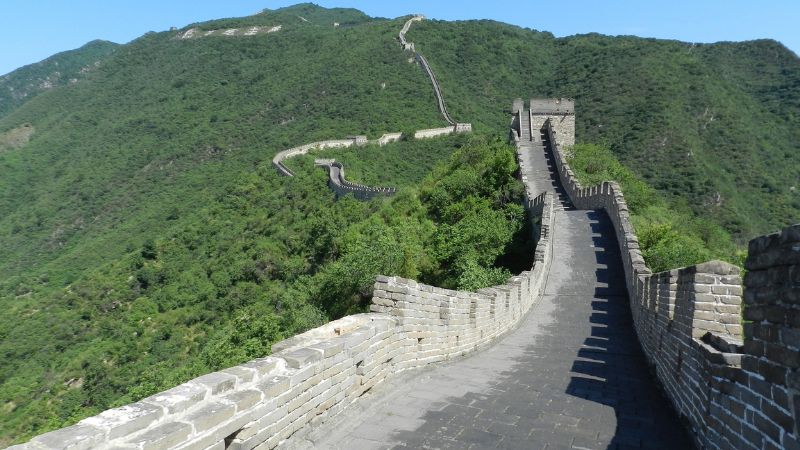
The Great Wall of China is a testament to the country’s rich history and cultural heritage. The history of this defensive system dates back over 2,500 years, originating from the state of Chu during the Zhou dynasty. It was created as an effort to protect against outside threats. Made of stone and brick, we regard this fortress as China’s most visible emblem.
Throughout history, several emperors have made improvements to the wall, with the Ming Dynasty unifying and expanding it further. Today, the Great Wall is a popular tourist destination, attracting visitors from all corners of the world.
The Great Ming Empire built Beijing’s barracks, watchtowers, and fortifications from 1368 to 1644. Its grandeur and significance continue to captivate people, making it one of Asia’s world famous historical places.
5. Angkor Wat, Cambodia
Angkor Wat is truly a sight to behold. It’s the world’s largest religious shrine, in a unique jungle setting not too far from Siem Reap. What makes Angkor Wat so captivating is not just its immense size, but also the intricate beauty of the complex. The Khmers designed this structure in the 12th century, and the craftsmanship is truly stunning.
Some buildings even take on a surreal appearance as the trees and roots overtake them. Everywhere you turn, you’ll see massive stone faces peering out, and intricate bas-reliefs lining the walls and entryways. If you’re up for a bit of adventure, there are countless decaying alleyways and steep stone staircases to explore.
It’s hard to imagine, but at one time, Angkor Wat was the largest city in the world before its decline in the 15th century.
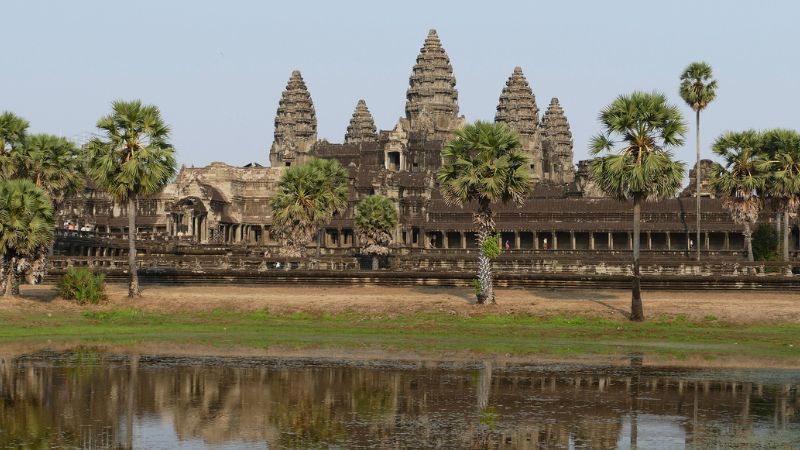
4. Stonehenge, England
Stonehenge is a prehistoric monument in the English county of Wiltshire, about 2.0 miles (3.2 km) west of Amesbury and 8 miles (13 km) north of Salisbury. One of the most famous sites in the world, Stonehenge, is a circular setting of large standing stones set within earthworks.
It is at the centre of the most dense complex of Neolithic and Bronze Age monuments in England, including several hundred burial mounds. Archaeologists believe they constructed the iconic stone monument from 3000 BC to 2000 BC, as described in the chronology below.
Radiocarbon dating in 2008 suggested that the first stones were erected in 2400–2200 BC, whilst another theory suggests that bluestones may have been erected at the site as early as 3000 BC (see phase 1 below). The surrounding circular earth bank and ditch, which make up the earliest phase of the monument, go back to about 3100 BC.
UNESCO added the site and its surroundings to its list of World Heritage Sites in 1986 in a co-listing with Avebury Henge monument. It is a national legally protected Scheduled Ancient Monument. Stonehenge is owned by the Crown and managed by English Heritage, while the surrounding land is owned by the National Trust.

3. Machu Picchu, Peru
Machu Picchu is world’s most historical places that was rediscovered in 1911 by an archaeologist named Hiram Bingham. It’s considered one of the world’s most beautiful and mysterious ruins. From the early 1400s, the Inca people erected hundreds of stone structures on this Andean mountain top (9060 feet elevation). But legend and myth claim Machu Picchu (meaning “Old Peak” in Quechua) was a sacred site long before then.
Whatever its origins, the Inca turned the site into a small (5 square miles) but extraordinary city. A secret ceremonial city, Machu Picchu, is completely self-contained. It is surrounded by agricultural terraces sufficient to feed its population, and watered by natural springs.

2. Petra
Petra (petra meaning rock) is a historical and archaeological city in the Jordanian governorate of Ma’an that is famous for its rock cut architecture and water conduits system. Established sometime around the 6th century BC as the capital city of the Nabataeans, it is a symbol of Jordan and its most visited tourist attraction.
It lies on the slope of Mount Hor in a basin among the mountains which forms the eastern flank of Arabah (Wadi Araba), the large valley running from the Dead Sea to the Gulf of Aqaba. Petra has been a UNESCO World Heritage Site since 1985 and is one of the famous historical places in the world.

1. The Great Pyramid of Giza
The pyramids of Giza are the only surviving Ancient Wonder of the World and one of the most famous tourist attractions in the modern world. They are some of the oldest sacred sites in our index and certainly among of the most impressive. The ancient Egyptians buried Pharaohs in the Giza pyramids, but its construction, date, and possible symbolism remain a mystery.
This mystery only adds to the attractiveness of these ancient wonders, and many modern people still regard Giza as a spiritual place. Out of the several fascinating theories to explain the “mystery of the pyramids,” we summarize one below. Giza is the most important site on earth for many New Age followers, who are attracted by the pyramids’ mysteries and ancient origins.
Since 1990, private groups have been allowed into the Great Pyramid, and most of these have been seekers of the mystical aspects of the site. The great age, grand scale, and harmony of the Giza pyramids are enough to awe even the most skeptical visitor.
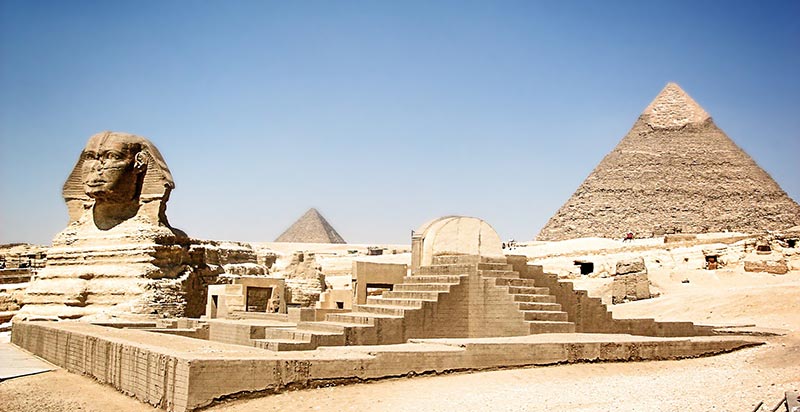
Conclusion
Exploring the most historical places in the world is an experience like no other. There’s a certain magic to standing in a place where significant events occurred in the past. It’s like you’re stepping back in time and witnessing history firsthand. And that there are so many incredible historical sites all over the world means that there’s always something new and exciting to discover.
From ancient ruins to iconic landmarks, there’s truly something for everyone to enjoy when visiting these sites. It’s an adventure seeker’s dream come true! Last, we believe this information about historical places names we shared with you will be a reliable reference source.
Frequently Asked Questions:
Q1. What is One of the Most Historic Places?
The pyramids in the Giza necropolis are one of the most historic places. It is in Egypt and is one of the famous burial sites and Seven Wonders of the Ancient World. It’s amazing to see such a historical landmark that has lasted for so long.
Q2. Which Country Has the Best Historical Places?
Italy is known for having the most historical sites in the world, and it’s truly awe-inspiring to witness these landmarks that have withstood the test of time.
